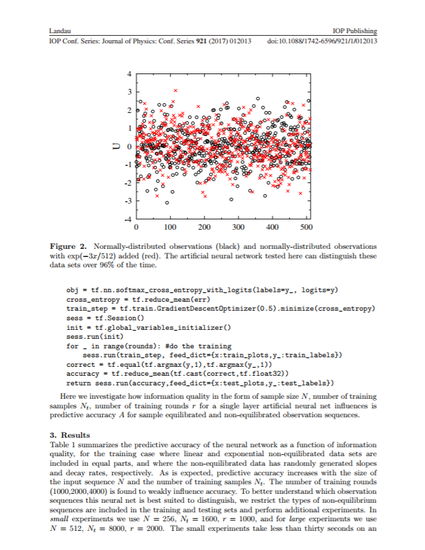
Determining which microstates generated by a thermodynamic simulation are representative of the ensemble for which sampling is desired is a ubiquitous, underspecified problem. Artificial neural networks are one type of machine learning algorithm that can provide a reproducible way to apply pattern recognition heuristics to underspecified problems. Here we use the open-source TensorFlow machine learning library and apply it to the problem of identifying which hypothetical observation sequences from a computer simulation are "equilibrated" and which are not. We generate training populations and test populations of observation sequences with embedded linear and exponential correlations. We train a two-neuron artificial network to distinguish the correlated and uncorrelated sequences. We find that this simple network is good enough for > 98% accuracy in identifying exponentially-decaying energy trajectories from molecular simulations.
This document was originally published in Journal of Physics: Conference Series by IOP Publishing. This work is provided under a Creative Commons Attribution 3.0 license. Details regarding the use of this work can be found at: http://creativecommons.org/licenses/by/3.0/. doi: 10.1088/1742-6596/921/1/012013
